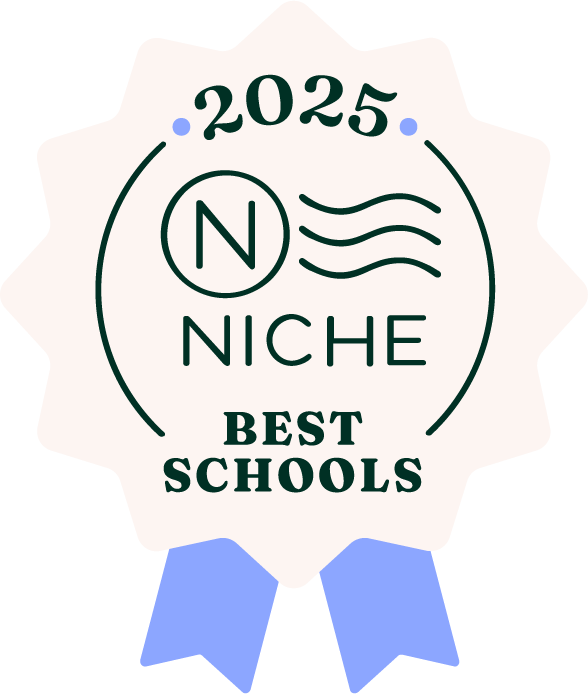Every Friday, Junior High students at the Greensboro Montessori School participate in a hands-on experiential education program in which they work together in teams simulating different aspects of a micro economy that is based on a Farm to Fork concept. One of the outcomes of the program is the preparation of a weekly meal for 40+ people in our certified kitchen. This self-run lunch business is known as Maria’s Cafe. Another outcome of the micro economy program is the operation of a mobile farmer’s market stand that enables students to sell produce from the School’s gardens and student artwork. Keep reading to learn more about the structure of micro economy program and how students are acquiring skills that will serve them long after graduation.
Each student cycles through a “career” in their participation in the micro economy program. There are a total of six career choices – research and development, design and fabrication, tribal council, finance, farm, and restaurant. Each career has a specialized focus and functions as its own entrepreneurial enterprise. Students apply for management positions within these careers and have a chance to hone in on particular interests and skills while serving the community. While each career has its own focus, all together, they operate under one umbrella known as Irossetnom Micro Economies Incorporated, also known by its acronym, IMI. (If you’re wondering about the name Irossetnom, that’s Montessori spelled backwards!)
On the Research and Development Team students specialize in scientific research and product development. Their current projects include managing the GMS chicken chickens, which they bought in 2016, and selling eggs, as well as making products in the forge that can be sold at Maria’s Market. Management positions include Director of Scientific Inquiry, Sustainability Coordinator, and Science Writer.
On the Design and Fabrication Team students work with 2D and 3D Design. They take photographs and design the GMS yearbook annually. They also take orders from the community on 3D products ranging from new classroom tables, to toddler picnic tables, to wooden recycling center bins on casters, to the GMS Farm Cart. Students work with design products like SketchUp to create 2D templates for products before they engage in the real life building process. Once made, these beautiful items are sold. Management positions include 2D Creative Director, Media Coordinator and Director of Technology, Media Assistant, and 3D Creative Director.
The Finance Team oversees finances for all of IMI. They process receipts for ingredients and materials, analyze operation costs, and present findings on net profits to the community on a weekly basis. They also conduct some marketing activities, like creating order forms to reserve food on Fridays, conducting surveys to find out how “customers” find the dining experience, and managing credit card sales and pre-orders. Management positions on this team include Chief Financial Officer, Assistant Bookkeeper, and Marketing Director. The Finance Team also runs a concessions stand.
The Tribal Council Team is the governing body of IMI. They host special events like dances, the Evening in the Pumpkin Patch (a Halloween-themed event for younger GMS students), Rock-a-thon (an all-night movie watching marathon to raise money for charities), a holiday toy drive, talent shows, and other special events benefiting the whole by bringing everyone together to celebrate community and raise money for charities and IMI. Management positions include equal representatives within the council.
On the Farm Team, students participate in all aspects of growing the food and getting it to the Table (Maria’s Cafe), and to the Farm Cart (Maria’s Market). They plant seeds, build greenhouse platforms, harvest and wash vegetables and deliver them fresh to the kitchen (very, very fresh,) take inventory on garden produce and plan for future crops, maintain the bee hives, cut flowers and make bouquets to sell to local vendors, and learn about local agriculture, different methods of growing food and how each affects our planet, and help to plan future menus based on what is growing seasonally. They also decorate our tables with nature inspired settings. Many of the ingredients in our Maria's Cafe recipes come directly from the GMS gardens, especially whole unprocessed foods like garlic, onions, salad greens, eggplant, bell peppers, sweet potatoes, persimmons, apples, figs, crab apples, butternut squash, tomatoes, and much more. We use no genetically modified ingredients (GMO’s) and part of our mission is to understand what is happening to our food system and how we can play our part to fix it. What better way to learn to be a global responsible citizen? Management positions on this team include Market Manager, Produce Manager(s), and Tea House Manager.
On the Restaurant Team (Maria’s Cafe), students chop, julienne, emulsify, grate, and learn new skills every week as they prepare the meal, and clean up afterwards. They gain much culinary expertise and are held to professional restaurant rules. They are learning about industrial equipment and processes and are inspected by the Health Department three times per year. They learn knife and food safety as well as quick methods for peeling and chopping garlic and onions and how to work with the best and freshest ingredients to make a delicious meal. Management positions include Head Chef, Sous Chef, Pastry Chef, and Pantry Manager.
Simon Sinek, best-selling author and renowned lecturer, made his mark with a famous TED Talk encouraging leaders and organizations to “Start with Why.” Knowing “what” you do and “how” you do it does not matter if you don’t know “why” you’re doing it. As we embark on a new journey for Greensboro Montessori School through 70 in 70: The Fund for GMS, we’re excited to examine Mr. Sinek’s model of what, how and why as it relates to revitalizing our Primary classrooms. This exploration provides transparency, meaning and context … all of which are necessary to effectively educate our children and be responsible stewards of our donors’ contributions.
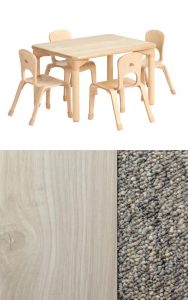
An example of the table and chairs, wood-grain tile and carpet selected for our Primary classrooms should we raise $70,000 by December 31, 2017.
What: One of the main goals of 70 in 70: The Fund for GMS is to revitalize our Primary classroom environments. “Revitalize” can be ambiguous, so let’s unpack this concept. If we raise $70,000 in 70 days, all four Primary classrooms will receive:
- New tables, chairs and shelving made from durable, sustainably harvested solid-wood and featuring a contemporary yet comfortable aesthetic specifically designed with the 3- to 6-year-old at heart
- New flooring including bonded, cushioned carpet and resilient, wood-grain vinyl tiling
- New countertops at every sink and snack station
- An enhanced outdoor classroom, with the addition of an outdoor sink and chalkboard to the Primary garden
In addition to the Primary classroom revitalization, we will also award faculty grants to the professional educators in our other divisions: Toddler, Lower ELementary, Upper Elementary and Junior High. This democratic school process includes a committee of students, faculty, and administration who review and approve grant requests from faculty. Grants focus on specific needs that will propel a classroom's or division's curriculum to the next level.
How: It’s simple - not easy - but simple. By raising $70,000 by December 31, 2017, we will have the funding to support this immediately actionable, strategic imperative for our School, the Primary classroom revitalization. $70,000 also supports our powerful tradition of awarding faculty grants.
Why: The environments in which we live, work and play directly influence the levels of joy, productivity and success we experience in each of these endeavors. Think about the time and effort we, as adults, place in building warm, pleasant and efficient environments for ourselves, our families and guests. The spaces we design impart value on the people who spent time in them.
The same goes for a child’s classroom. While we may take this for granted, Maria Montessori revolutionized education by designing her classroom environments for her students, not for the teachers. Furthermore, she trained teachers in classroom design so they could create environments that optimize student learning. But why?
Students require freedom of movement in their living and learning spaces. Classrooms must have child-sized small tables for group work, tables for a single student to work independently, and chairs that can easily be moved by the student. Students are able to make themselves comfortable and find their place in the room where they best work.
Classroom furniture also facilitates learning attention to detail, control of error, and self-regulation. Students receive lessons on how to carry chairs safely; how to walk in a controlled manner carefully navigating friends and materials laid out on rugs; and how to learn when a work or space is not available in a specific moment. Carrying a chair without dropping it, knocking a friend, or disturbing a group is a challenge to be repeated for success. And is all done by design.
Another key element in a Montessori classroom is the consideration of aesthetics: beauty and simplicity are what draw the child’s interest into the purposeful work available throughout the classroom. Each and every day, our teachers prepare their learning environment by arranging materials on the shelves in an order and sequence that facilitates their use. Our teachers’ goal is to connect their students to the materials, which then become the active “teacher” of abstract concepts giving the student opportunities for discovery-based learning.
In describing the importance of the teaching-role played by the materials in the classroom, Dr. Montessori wrote: “As a teacher, the material is always ready, always patient, constant in mood, and prepared to repeat its lesson. It is truly a striking teacher in that it imparts a deep mastery, constantly leading to analysis and discovery until the root of the problem is reached. The pupil will never again forget that lesson.”
An investment in our students’ learning environment is an investment in them. Upon crossing the threshold of their rejuvenated classrooms for the first time, our Primary students will know they are valuable members of our community. The improved aesthetics of their classrooms will instill a greater sense of purpose, clarity, motivation, ownership and belonging in each of them, and their learning will be maximized.
At face value, flooring, furniture and countertops may not seem important or inspirational. But when we know why design and beauty play a leading a role in the Montessori classroom, we understand the significance of our investment. (We also see how Montessori’s classroom design remains on the cutting edge of education.) Just like gathering places of our adult lives - living rooms, kitchens, offices, conference rooms, even that special corner at your local coffee shop - prepare us for our best work, so do our classrooms for our children.
In 2005, Greensboro Montessori School eighth graders first traveled to Costa Rica for a cultural immersion experience. We were eager to connect with another Montessori school abroad with a similar adolescent program. Our research led us to The Summit School in Coronado, Costa Rica which is very close to the capital city of San José. On our first expedition to Costa Rica, we incorporated a formal school visit to The Summit School and it was the highlight of our trip. The parents made a special lunch for us, and our students assisted the younger Costa Rican children with a school project. When we returned the following year, students from The Summit School accompanied our students in our daily travels and service learning adventures. At that point, Greensboro Montessori School and The Summit School became sister schools.
Since then, the eighth grade trip to Costa Rica has morphed into an authentic immersion experience. Our students stay with the Costa Rican families of The Summit School students, and together, our students and the Ticos (a colloquial term for natives of Costa Rica) go everywhere together. We visit volcanoes, complete high ropes courses and sail through the rainforest canopy on zip lines. We travel to the Caribbean Coast where we walk the beach at night looking for turtle eggs to bury in a nearby protected hatchery. We travel to the Pacific side to snorkel and explore rain forests and animal sanctuaries. We spend a day in downtown San José learning about Costa Rican history, art, and government. Our weekends are spent with the host families doing what they usually do. The students also do things you would expect them to do on the weekends: they get together and go to the mall or a movie or a party at someone’s home.
Every year, when asked what our students’ favorite part of the trip is, they always say their homestay with the Tico families. Our students make friendships that last for years, and some even return to Costa Rica on their own to visit their “families.”
In 2009, the Ticos first ventured to Greensboro Montessori School to stay with our students and learn more about North Carolina. Even though we don’t have erupting volcanoes or zip lines through the rain forest, we still have a great time sharing the landmarks and natural wonders of our state with them. Our visits have included such destinations as the Duke Lemur Center, the North Carolina Museum of History, and Hanging Rock State Park. On a recent visit, our itinerary included kayaking on the Dan River, exploring Grandfather Mountain, and a tour of the Duke University Marine Lab in Beaufort. Our homestay hosts always arrange social gatherings for the students on the weekends. The Ticos typically experience some classroom time with us as well as a trip to The Land in Oak Ridge.
Our students benefit tremendously from the life-changing experiences resulting from our relationship with The Summit School. With every visit to Costa Rica, our students return with their eyes a little wider and their lives a little richer as they have their first experience actually living in another culture. They begin to see the world in a different light and develop a new appreciation for the abundance in their lives.
"An Education for Life," has become a marketing catchphrase in education. What was first coined by Dr. Maria Montessori and unique to her research-based approach, is now overused to the point of meaninglessness. But rather than give up on Dr. Montessori's philosophy, let's explore it's origin and provide the context needed to rescue this phrase from educational pop culture.
In 1949, Dr. Montessori wrote "The Absorbent Mind" based on her decades of childhood research. She writes of her pedagogical theory: "This is education, understood as a help to life.” Dr. Maria Montessori applied a scientific technique to the observation of natural development in students and concluded there are a number of important concepts concerning childhood growth and development:
- Optimum growth is affected by the environment. Dr. Montessori observed that growth can be enhanced by the environment in which the child grows.
- Growth occurs in spurts. Dr. Montessori observed that growth occurs in stages which have peaks and valleys. She called these stages “planes of development.”
- Childhood has distinct characteristics. Dr. Montessori observed that children are not “little adults.” The process of growth during childhood is unique and like no other time during the human lifespan.
- Intelligence increases with experience. Dr. Montessori observed that intelligence grows with experience, and the key to developing the intellect is to promote the constructive activity of the child.
- Each child has a unique potential. Dr. Montessori observed that the child did not come as a clean slate and then
became a product of his cultural experiences. She believed that the child has innate tendencies to become human with a
vast potentiality that was largely wasted in conventional education. - Education is needed to serve the child and not just the needs of society. Dr. Montessori observed that education must place its greatest energies towards serving the child for the betterment of society and the evolution of humankind as a species.
- Children love to learn. Given an optimal environment with adults educated about the true needs of the developing
child, Dr. Montessori observed that children pursued knowledge with vigor and enthusiasm. The classic method of
rewards and punishment are obstacles to the child’s healthy growth and interest in learning. The structure of the Montessori method provides freedom within limits which enhances the learning experience for the child and builds within him an intrinsic motivation to succeed. - Education for development. The Montessori method structures education to meet the developmental needs of the
growing child without preconceived curricula or a directive approach. This she called an education for life.
An Education for Life. When you hear this phrase in our hallways, know it's not some quip or expression resulting from a focus group. It is tenet of the Montessori method highlighting the dual role of education: to meet the child where she is in her developmental growth and to prepare the child for that which lies ahead.
Greensboro Montessori School sends tremendous congratulations and a fond farewell to our class of 2017. In our lead photo for this post, the class of 2017 stands proudly in the top row. Pictured from left to right are Isabel Egbert, Jean-Lou Paré, Jack Brown, Sophie Strugnell, Baxter Smelzer, Simon Smith, Eli Wainscott, Ya Chukasul, and Hayden Juneau. The inaugural ninth-grade class, who will return next year, kneels along the bottom row. Pictured from left to right are Alex Kotis, Owen Jacobs and Theo Fenske.
[dt_sc_h2] Sound Bites from the Class of 2017[/dt_sc_h2]
Greensboro Montessori School's graduation exercises include personal speeches from the graduates. In these moments, the audience is treated to glimpses of each graduate's past, present and future. In honor of these young adults' self-awareness, maturity, accomplishments and gratitude, we share some of the most touching thoughts shared by the class of 2017. Photos courtesy of Aris Wells Photography
[dt_sc_h5]Jack Brown[/dt_sc_h5]

"I have only been at Montessori for three years, but I have gotten the experience of a lifetime. I can say, without a doubt, that this Montessori experience will put me ahead all throughout my life. First of all, I'd like to thank my parents for sending me to this school...Like all things in life, things come and go away, sometimes even too quickly. And when I found my grade the oldest one in Montessori, I knew it had been too quick. Although I have been dreading leaving this school, I am also looking forward to the upcoming year."
Jack's next stop: Grimsley High School
[dt_sc_h5]Ya Chukasul[/dt_sc_h5]
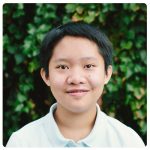 "Now Middle School. Nothing has changed a lot about me; I'm still quiet as I could ever be. Old friends were still there for me, so I felt safe. Things changed here though. Assignments got more difficult and [there were] projects I thought I would never be able to do. From creating a wolf suit on stilts, to creating costumes, to creating a movie. Teachers in Middle School: Jonathan, Doug, Deirdre, Dean, Jenny, Sandra, Matt and Keisha. Without your help, I wouldn't be on this stage today. Middle School felt just like family."
"Now Middle School. Nothing has changed a lot about me; I'm still quiet as I could ever be. Old friends were still there for me, so I felt safe. Things changed here though. Assignments got more difficult and [there were] projects I thought I would never be able to do. From creating a wolf suit on stilts, to creating costumes, to creating a movie. Teachers in Middle School: Jonathan, Doug, Deirdre, Dean, Jenny, Sandra, Matt and Keisha. Without your help, I wouldn't be on this stage today. Middle School felt just like family."
Ya's next stop: Weaver Academy for the Performing and Visual Arts and Advanced Technology
[dt_sc_h5]Isabel Egbert[/dt_sc_h5]

"Before I do anything, I need to thank my family. Grant, you made me who I am in ways you can't even understand. You are always there for me, and I love you. Mom and Dad, thank you for putting me in this school and for supporting me in everything I do...Eighth grade is a confusing, scary fever dream. Everything stops being just a thing and becomes your last thing. Your last Marketplace; your last Land trip; your last Advisory; [your] last time in CASA; until finally, you're standing here for the last time. Thank you all for everything."
Isabel's next stop: Weaver Academy for the Performing and Visual Arts and Advanced Technology
[dt_sc_h5]Hayden Juneau[/dt_sc_h5]
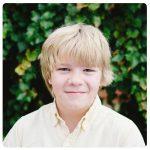
"In his final year at this school, this kid, alongside his partner in crime, Owen Jacobs...started to run everything tech related, doing things like being the first students to run [theatrical productions] by themselves. This kid, in his final year, found out what he wanted to be. He found out what he was skilled at, and here he is, standing on a stage, the last day he will be a student here, telling you about the last three years of his life in the third person. How - meta - is - that?"
Hayden's next stop: Weaver Academy for the Performing and Visual Arts and Advanced Technology
[dt_sc_h5]Jean-Lou Paré[/dt_sc_h5]

"It took a little bit of time to adjust to the new homework load, but once I got past that, I had lots of fun in Jonathan's long-term [creative labs] projects, Dean's science labs, and Doug's math classes. I also had a blast at the land helping the Racoon tribe set up the Tipi, make a fire, and the fun job of washing dishes. I also enjoyed the woodworking rotation...Thank you to everyone that has helped make my experience at GMS the best it could be and making it possible for me to attend the STEM Early College next year."
Jean-Lou's next stop: STEM Early College at NC A&T State University
[dt_sc_h5]Baxter Smelzer[/dt_sc_h5]
"After 12 years of the Greensboro Montessori School, I am definitely going to miss it. Leaving can be a scary and an exciting time. And I have had not only amazing relationships with friends throughout the years, but also with the teachers. You couldn't ask for more involved and caring teachers. Teachers, staff, and friends all in [an] awesome Montessori environment that all helped me grow to be ready for the next step in my life. After being here, I look around and realize I am ready. I have been well prepared and have learned the skills I need to move forward."
Baxter's next stop: Page High School (pre-IB) or Weaver Academy for the Performing and Visual Arts and Advanced Technology
[dt_sc_h5]Simon Smith[/dt_sc_h5]

"I have spent..12 years of my life in this school and sometimes I gotta ask, 'Is this the real life or is [it] just fantasy?' This school has been amazing to me from the teachers to the staff, and this place has most definitely given me its all...A little known fact about me..I don't like change. But life forces you to change whether you like it or not...You just have to adapt."
Simon's next stop: Weaver Academy for the Performing and Visual Arts and Advanced Technology
[dt_sc_h5]Sophie Strugnell[/dt_sc_h5]

"My experience at GMS has definitely been special...Learning in [a] Montessori environment is a lot more free. There aren't as many guidelines, and it's more based around genuine curiosity. I think in Montessori there are a lot more lessons that are being learned, and there are a lot of life skills that are involved. I've really enjoyed my time here and have made many memories with many people. Even though I've only been here one year, I'm gonna miss everyone so much, but I'm excited to see what's in store for me next."
Sophie's next stop: Northern Guilford High School
[dt_sc_h5]Eli Wainscott[/dt_sc_h5]
"My final word describes my Middle School experience is 'nuevo,' which means 'new' in Spanish. Everything is new here. You are thrust into projects and situations that you've never experienced before, and it's blissfully confusing to figure it out, solve the puzzle, get rid of the grit on the lens to see the full picture. I've done it all now, however. I've planted microgreens; I've led a group to be saved by aliens; I've branched out to new people, new groups of people; and I've learned by this. By every moment, every decision, I've grown as a person."
Eli's next stop: Weaver Academy for the Performing and Visual Arts and Advanced Technology
<hr>
[dt_sc_h2]Looking Ahead to the Class of 2018[/dt_sc_h2]
In 1997, Greensboro Montessori School graduated its first class of three eighth-grade students. It seems fitting on the 20th anniversary of that historic occasion, we are proudly introducing the School's first class of ninth-grade students, and it is also comprised of three students. Greensboro Montessori School is proud to announce the intelligent, talented, creative and courageous young men who are boldly pioneering the School's ninth-grade program.
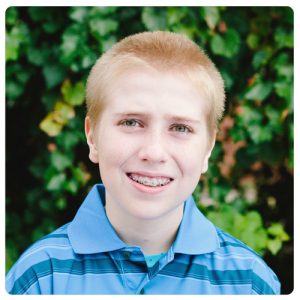
Theo Fenske
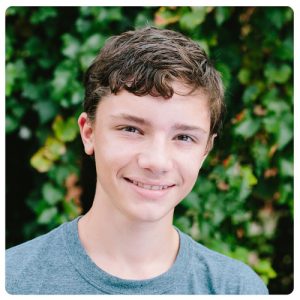
Owen Jacobs
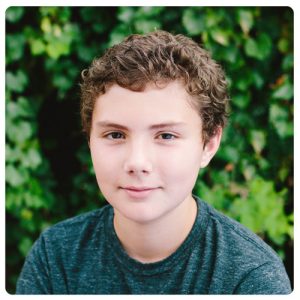
Alex Kotis
If you stroll through our school gardens on any given Monday afternoon, you are likely to find Marcia Jones volunteering alongside our lead environmental educator, Eliza Hudson. As a retired educator, Marcia looks forward to her weekly gardening class with our Primary students, and with her 31 years of experience as a kindergarten teacher in Guilford County, we look forward to all she has to offer the children and the school. In a recent interview, Marcia shared with us how much she loves teaching young children the value of tending the earth, especially her four grandchildren including Foster, who is enrolled in our Primary program.
In addition to helping in our gardens on a weekly basis, Marcia supports several other community gardening projects in and around the Greensboro area. She uses her green thumb to tend the gardens at the Wentworth Museum in Rockingham County, the Guilford College Community Garden and Jones Elementary School. “Gardening helps me relax,” Marcia shared, "and its so nice to be able to see the product of all your effort. I think that’s especially true for young children." Many years ago, she started a gardening program with her kindergarten students at Sedgefield Elementary School. “The children loved it. We grew a wide variety of vegetables from seed, including squash, radishes, potatoes, peas, and pumpkins. The children especially liked the pumpkins because they would grow all summer and could be harvested in the fall,” she shared.
With her family’s roots in this area of North Carolina, Marcia is deeply connected to the land, and her knowledge of farming is much greater than what her humble demeanor might initially suggest. She grew up working on her family's farm in Rockingham County just north of Greensboro and she has many fond memories of driving the tractor out in the fields. “My sister and I were working on the family farm up until two years ago. Over the years, we’ve grown tobacco, corn, wheat, soybeans and apples.” Even with those years of experience in her back pocket, Marcia continues to express her modesty about having a green thumb and loves learning new gardening techniques from those around her. “Lately, I’ve been learning more about which herbs to plant around my vegetable garden to deter deer and other wild animals,” she told us.
In a recent article in the New York Times titled "Learning to Think Like a Computer," author Laura Pappano mentions the need for students in all disciplines to understand and practice “computational thinking.” She defines these skills as “recognizing patterns and sequences, creating algorithms, devising tests for finding and fixing errors, reducing the general to the precise and expanding the precise to the general.” As I read through the article, I thought of the scientific Montessori materials used daily in our classrooms that give our students experiences with these skills. From the time they are toddlers, Montessori students are challenged to identify patterns, follow sequences, and recognize errors in their own work.
At its most basic level, the layout of a Montessori classroom is designed to aid the recognition of patterns and sequences. The shelves are organized neatly from top to bottom and from left to right, reinforcing the same orientation with which we read. On a deeper level, the materials themselves are designed to appeal to the senses and entice curiosity and repetition, thereby enhancing the young child's ability to directly compare, contrast and discover the patterns and sequences inherent in the environment. Dr. Maria Montessori once said, “The education of the senses has, as its aim, the refinement of the differential perception of stimuli by means of repeated exercises.” It is through these independent, repeated exercises that children gain this deep perception of patterns that exist in the world around them.
In traditional educational settings, children go to school and do work that is prescribed by the teacher. Lessons that employ Montessori materials are teaching students to think through a complex algorithm of steps each time they independently take an activity off the shelf: selecting the activity, identifying and following each step of the activity, completing the task at hand, and then returning the work to its space on the shelf. The child then has the freedom to create his or her own algorithm in how the material can be used effectively. Each material has variations and extensions (new steps in the algorithm) that can be shown by the teacher guide, or more often, discovered by the student. This logical process is applied across all areas of the curriculum.
In addition to thinking through algorithms, learning to devise tests for finding and fixing errors is another aspect of computational thinking. Dr. Montessori was intentional about creating learning materials to “provoke auto-education," in other words, materials that were self-correcting. In this way, the child could experiment with a material and deduce the correct answer through trial and error, rather than having the teacher validate the correct answer. “Indeed, it is precisely in these errors that the educational importance of the didactic material lies.” (The Montessori Method, p. 171) Devising tests for finding and fixing errors is an essential element the Montessori method of education.
Another skill listed as essential to computational thinking is reducing the general to the precise and expanding the precise to the general. The Montessori math materials are the best example of the student’s ability to breakdown abstract concepts into concrete examples and vice versa. From the start, the red and blue rods in the Primary classroom allow a child to explore the concept of one to 10 with his or her hands. Also, an exploration of the introductory golden bead tray involves realizing that the 10-bar is made up of 10 single unit beads, the 100-square is comprised of 10 10-bars, and the thousand cube is comprised of 10 100-squares. This understanding of place value and quantity is further reinforced by its relationship to the geometric forms of a line, square and cube.
My favorite example of how the materials demonstrate the connection between precise and general, or concrete and abstract, is in the math bead cabinet. In the Primary classes, the student uses the square chains to physically count one-by-one up to the square of each number, then uses the cube chains to count to the cube of each number (i.e., the cube chain of threes counts to nine, and the cube chain of threes counts to 27). In Elementary classes, the chains are then used for skip counting (e.g., three, six, nine, 12, 15, etc.), which becomes a lesson in multiples. Studying multiples provides a peek into the abstraction of pre-algebraic formulas.
So far we’ve explored some of the ways the Montessori materials are leading children to develop computational thinking. In Part Two of this three-part series, we will interview Jonathan McLean about how our sixth, seventh and eighth level students are applying computational thinking in his Creative Labs course in the Middle School.
A professional artist and entrepreneur in her own right, Madeline Gallucci is a nothing less than a rising star in the Kansas City art scene.
After graduating from Greensboro Montessori School in 2004 and Weaver Academy in 2008, Madeline received her Bachelor of Fine Arts from the Kansas City Art Institute in 2012. Shortly thereafter, she landed the Charlotte Street Foundation Urban Culture Project Studio Residency. Two years later she was named Artist-in-Residence at Hotel Phillips, a historic hotel in the center of the city. The 12-month program showcased Madeline and her work in a large storefront window space on the first floor of the hotel that doubled as her studio. Her artwork was also translated into textile patterns used in interior design elements—such as bedding, upholstery, pillows, curtains and wall art—in some of the guest rooms. She also conducted numerous workshops, studio tours and artist lectures. Madeline was only the fourth artist to be selected for this elite residency program and notes: “It was a tremendous opportunity to develop my public speaking skills. In essence, I was acting as an ambassador for abstract art.”
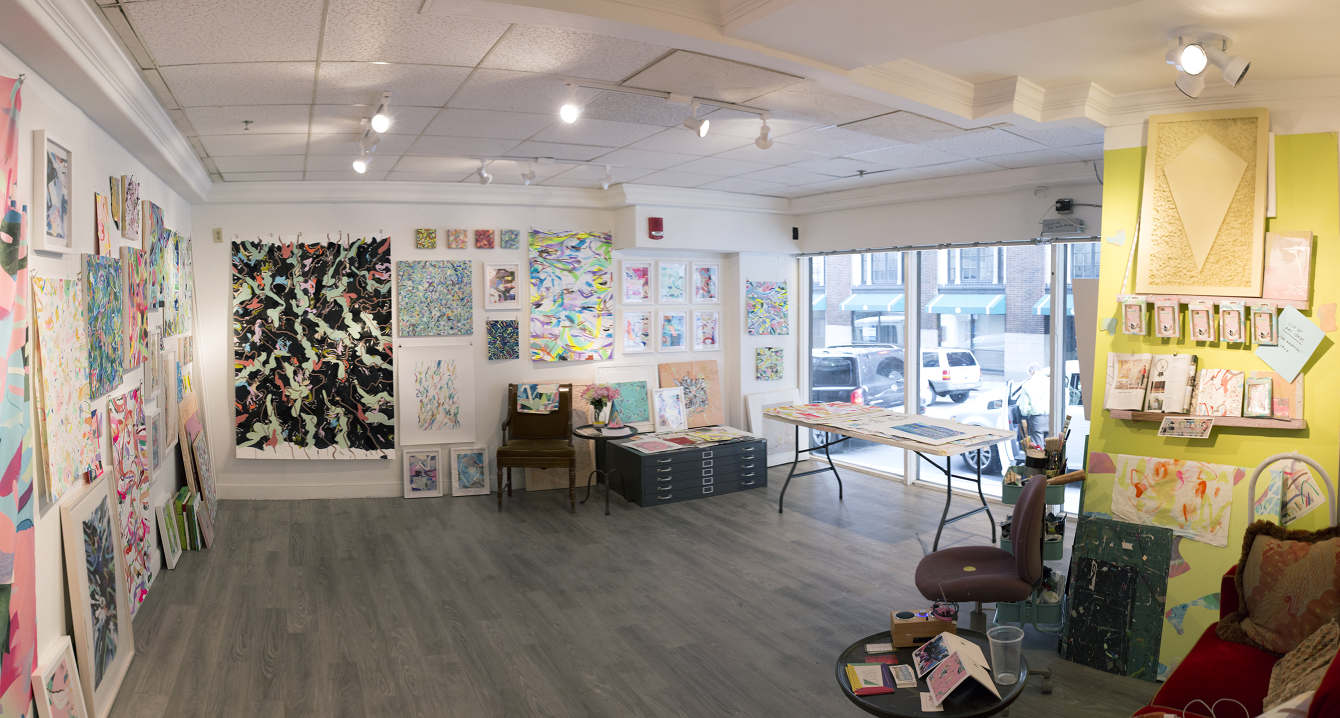
Madeline Galluci's studio gallery at Hotel Phillips. The program offered an experimental and collaborative opportunity for Madeline, the hotel, guests from all over the world, and the local Kansas City community.
As if two residencies weren’t enough to celebrate, Madeline was named one of three Charlotte Street Foundation Visual Artist Award Fellows in 2016. The award recipients were selected through a competitive process involving in-person interviews, presentations and studio visits by a panel of renowned and qualified arts professionals, and culminated in a four month exhibition that concluded in January 2017 at the Kemper Museum of Contemporary Art, Crossroads location. She also received a $10,000 unrestricted grant to support her work as an emerging contemporary artist. Madeline described this exhibition as a turning point in her life and her career. As a result of that award, she sought representation by a professional firm, Weinberger Fine Art in Kansas City, Missouri.
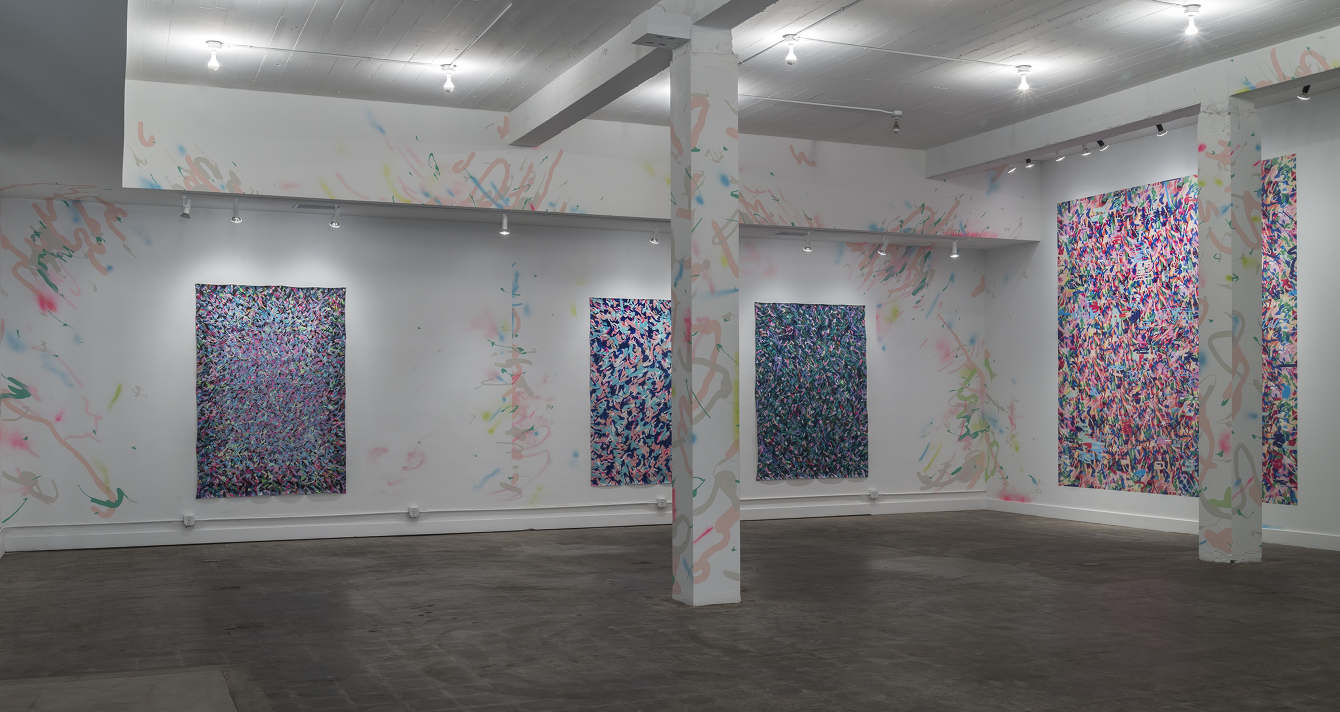
Madeline's work while on display at the 2016 Charlotte Street Foundation Visual Artist Awards Exhibition at the Crossroads location of the Kemper Museum of Contemporary Art. Photo by Misha Kligman.
When asked to describe her work, Madeline says, “My work is driven by color. Right now, I am playing with the combination of fluorescent colors together with colors found in nature. My work is also very whimsical. I am fascinated by camouflage culture. If the purpose of camouflage is to help something blend in to its environment, what happens when you take that pattern out if its natural environment. How does it blend in or stand out? I think of the trend of pink camouflage."
Beyond the borders of Kansas City, Madeline has also shown nationally at IDIO Gallery in Brooklyn, New York; Rebekah Templeton in Philadelphia, Pennsylvania; Skylab Gallery in Columbus, Ohio; and Terrault Contemporary in Baltimore, Maryland. Her newest work is currently on display in an exhibit entitled “Habitual Observations” at Weinberger Fine Art.
In addition to pursuing her professional goals through a fine art studio track, Madeline shared that she is also realizing her drive to become an arts administrator. Since 2014, she has worked as a co-director of Front/Space, a storefront apartment in downtown Kansas City that has been repurposed for non-commercial exhibits, performances, forums, research and publishing projects.
As co-director of the gallery, Madeline loves fostering a spirit of collaboration. She works closely with past exhibitors to review proposals for new artists who want to use the live/work studio and gallery space (which is supported by funding from the Robert Rauschenberg Foundation, the Charlotte Street Foundation and the University of Kansas' Spencer Museum of Art). "I love that the momentum comes from the artists themselves. I don’t want the gallery to just be the artwork that I or my partner would curate. It is important to me that we curate through an open call to the community.” The other element of the Front/Space mission that resonates for Madeline is the connection to social justice. “Front/Space is a safe space for artists and people who have been marginalized. We want the artist to feel safe to use the space for risk taking and to experiment with art that may not be accepted in the main stream. And more than anything, we want the artists to do what they want to do.” Madeline’s skills as an administrator and collaborator are paying off as the gallery has received the biggest group of proposals to date...over 50. “We know our reach is growing,” she stated proudly.
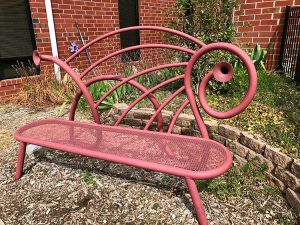 Madeline's passion and penchant for the arts run deep. Her brother, Mario Gallucci, holds a Master of Fine Arts in visual studies and lives in Portland, Oregon. Her father, Jim Gallucci, is an internationally acclaimed sculptor based in Greensboro. His large gateway pieces have transformed the Greensboro landscape, and Greensboro Montessori School is honored to have two of his “whisper benches” in the gardens flanking our front office. Madeline's mom is Dr. Kathy Gallucci, associate professor of biology at Elon University. Madeline shared she and her mom have a running joke that in their family, art is the dominant gene and science is the recessive gene. Art and science genes aside, if you saw the two side by side, you might actually wonder if they were twins.
Madeline's passion and penchant for the arts run deep. Her brother, Mario Gallucci, holds a Master of Fine Arts in visual studies and lives in Portland, Oregon. Her father, Jim Gallucci, is an internationally acclaimed sculptor based in Greensboro. His large gateway pieces have transformed the Greensboro landscape, and Greensboro Montessori School is honored to have two of his “whisper benches” in the gardens flanking our front office. Madeline's mom is Dr. Kathy Gallucci, associate professor of biology at Elon University. Madeline shared she and her mom have a running joke that in their family, art is the dominant gene and science is the recessive gene. Art and science genes aside, if you saw the two side by side, you might actually wonder if they were twins.
Like so many of our graduates, Madeline attended Greensboro Montessori School from the time she was a primary level student. “I was such an independent learner,” she said. “My parents knew that GMS was a good fit for me because I always had to do things in my own way and in my own time.” She further reflected on the values and life lessons from GMS that stick with her today. “Looking back, I realize how [the Montessori method] mirrored art school and also how it mirrors studio practice. There was always room for creativity and experimentation, and at the same time, I had to learn how to stay motivated and create my own structure and deadlines."
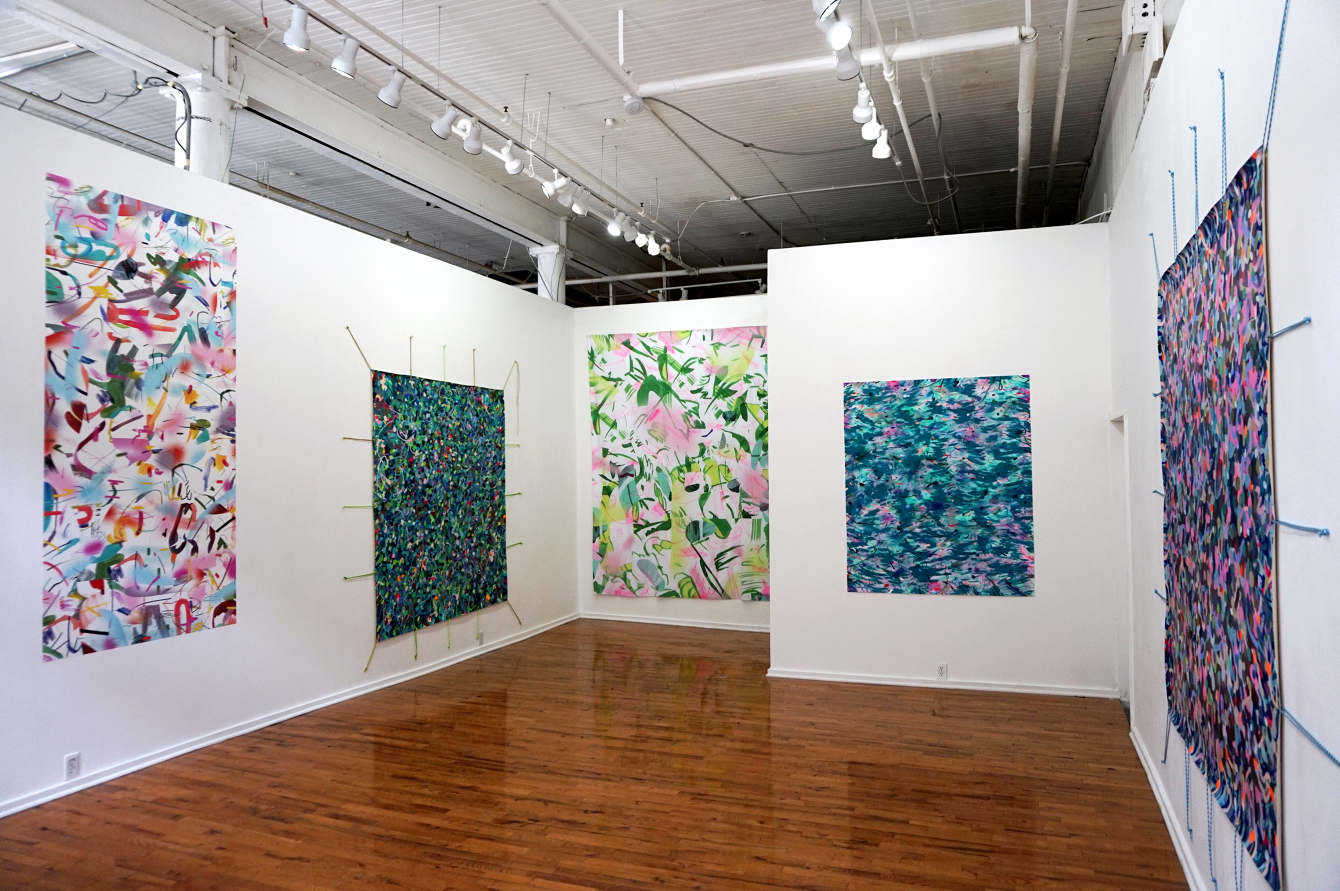
Madeline's work from DOUBLE TAKE, a 2016 exhibition at Terrault Contemporary in Baltimore, Maryland.
Greensboro Montessori School is delighted to announce Dr. Kevin Navarro has been named head of Greensboro Montessori School. Kevin will assume his role on July 1, 2017.
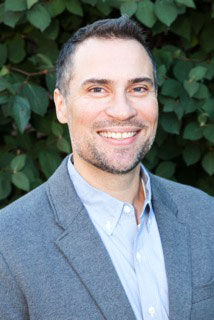 Throughout the six-month search process, the School's search committee was impressed by Kevin’s passion for children, commitment to education and inclusive approach to leadership. His sincere respect for Greensboro Montessori School revealed itself early when he wrote in his application: “your image of the child, your respect for faculty, your belief in children’s construction of meaning, and your mission … they all resonate deeply with me. My primary goal as an educator is to empower each individual student and staff member to discover and realize their full potential.” Kevin’s personal and professional values align with our School's rich history and current culture, and his exceptional leadership skills and unique ability to articulate the benefits of experiential learning will help carry Greensboro Montessori School well into the future.
Throughout the six-month search process, the School's search committee was impressed by Kevin’s passion for children, commitment to education and inclusive approach to leadership. His sincere respect for Greensboro Montessori School revealed itself early when he wrote in his application: “your image of the child, your respect for faculty, your belief in children’s construction of meaning, and your mission … they all resonate deeply with me. My primary goal as an educator is to empower each individual student and staff member to discover and realize their full potential.” Kevin’s personal and professional values align with our School's rich history and current culture, and his exceptional leadership skills and unique ability to articulate the benefits of experiential learning will help carry Greensboro Montessori School well into the future.
Since 2005, Kevin has served as assistant head of school at The College School, a pre-K through eighth grade independent school in St. Louis, Missouri. The College School provides experiential and thematically-integrated education to 260 students on two campuses, a main, suburban campus and a 28-acre property which serves as the “headquarters for learning beyond the classroom” just 30 minutes down the road. The search committee couldn't help but marvel at the synergies between The College School and Greensboro Montessori School and know Kevin’s reverence for learning beyond classroom walls will significantly benefit our students’ academic success and the Greater Greensboro community as a whole.
As assistant head of school at The College School, Kevin currently oversees long-range strategic planning; technology integration in the classroom; curriculum coordination, development and documentation; faculty and staff hiring, onboarding, goal-setting and professional development; internal and external communications; and accreditations with the Independent Schools Association of Central States (ISACS). Prior to joining administration, Kevin taught language arts as a full-time middle school faculty for eight years.
A lifelong student himself, Kevin recently received his doctoral degree in character education and democratic school governance from the University of Missouri, St. Louis. He presented his thesis work, Vulnerable leadership: Definition and relation to effective character education, at the Association of Moral Education symposium at Harvard Graduate School of Education in December of 2016. Kevin also holds a master’s in teaching and a bachelor’s in developmental psychology with minors in educational studies and Russian studies.
Joining Kevin in his move to Greensboro are his wife, Jessica (“Jess”), and three children ages seven, five and two-and-a-half. The entire family is committed to this next step in their lives. Jess is preparing to begin her own doctoral pursuit in social work and plans to attend either the University of North Carolina at Chapel Hill or Greensboro. The kids are looking forward to seeing their cousins beyond their current visits during summer and winter breaks. Kevin’s brothers and their families live in North Carolina, one in Charlotte and the other in Raleigh. The School is confident Kevin, Jess and the kids will contribute to our vibrant community, both as individuals and as a family already dedicated to the mission and values of Greensboro Montessori School.
In our School’s journey to find and hire Kevin, the School's formal search committee completed a methodical and thorough nationwide search in collaboration with Carney, Sandoe & Associates, a recognized educational recruiting firm specializing in independent schools. The search committee first sought input from the entire community on the qualities and skills our School needed in our next head of school. Hundreds completed an online survey and participated in an on-site visit with our dedicated search consultant. Our consultant captured invaluable feedback and crafted a customized position description for our head of school opportunity. After a three-month open application period, the search committee received 20 dossiers from qualified and well-matched candidates. From there, the search committee narrowed the field down to six with whom they conducted Skype-style interviews. They named three finalists who each spent two days on our campus interacting with students, families, faculty and staff.
After his visit and receiving survey feedback from the community, it was evident Kevin possessed an extraordinary combination of professional experience and academic achievement that would provide Greensboro Montessori School with a dynamic leader who has the passion, ability and skill set to gracefully shepherd our students and faculty to new, unprecedented levels of success.
As our community welcomes Kevin, Jess and their children to Greensboro Montessori School, we also want to acknowledge and thank members of the search committee who dedicated countless hours to this process. They channeled their love and commitment to our School to find a leader whom they respect and look forward to working with for many years to come. Most importantly, they wholeheartedly know Kevin is the best leader for the most important people on our campus, our students!
Dear Parents, Alumni and Friends,
As the chair of your Head of School Search Committee, I wanted to remind you that our remaining two candidates will join us on campus for back-to-back visits beginning Thursday, January 26.
We encourage you to attend our Parent Meet and Greet events for our last two candidates. After meeting each of the them, we hope you will share your thoughts through participation in a quick survey which we will email to all attendees of the respective events. The survey will open the day the candidate visits and remain open for two days after the end of the visit.
Stay tuned for more details on our remaining candidates in the upcoming edition of The Pinwheel. In the meantime, should you have specific questions about this process or comments about our candidates, please don't hesitate to contact me.
Best wishes to you and your family!
Sincerely,
David Bouska
Search Committee Chair


